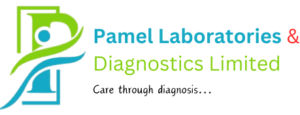Breast cancer is one of the most prevalent cancers affecting women worldwide, though men can also develop the disease. Early detection and effective treatment are essential in improving survival rates and quality of life. This article will discuss the risk factors, symptoms, and available treatment options for breast cancer.
Risk Factors for Breast Cancer
Several factors can increase the risk of developing breast cancer, including:
Age – The risk increases with age, with most cases diagnosed in women over 50.
Genetics and Family History – Inherited gene mutations, such as BRCA1 and BRCA2, significantly raise the risk.
Hormonal Factors – Extended exposure to estrogen due to early menstruation, late menopause, or hormone therapy can contribute to higher risk.
Lifestyle Factors – Obesity, alcohol consumption, and a lack of physical activity can increase susceptibility.
Radiation Exposure – Previous radiation treatment to the chest area raises the likelihood of developing breast cancer.
Common Symptoms of Breast Cancer
Breast cancer symptoms vary but may include:
A lump or thickening in the breast or underarm
Changes in the shape or size of the breast
Skin dimpling or puckering
Nipple discharge or inversion
Redness or scaliness of the breast skin or nipple
Persistent breast pain or discomfort
Diagnosis and Screening
Early detection plays a crucial role in treatment success. Common screening methods include:
Mammogram – A specialized X-ray to detect abnormal growths before symptoms appear.
Ultrasound and MRI – Used for further evaluation if abnormalities are found.
Biopsy – A sample of breast tissue is taken and examined for cancerous cells.
Treatment Options
Treatment for breast cancer depends on the stage, type, and individual patient factors. Common treatments include:
Surgery – Includes lumpectomy (removal of the tumor) or mastectomy (removal of the entire breast).
Radiation Therapy – Uses high-energy rays to target and destroy cancer cells.
Chemotherapy – Medication is used to kill cancer cells or prevent their growth.
Hormone Therapy – Blocks estrogen or progesterone to slow or stop hormone-sensitive cancers.
Targeted Therapy – Focuses on specific cancer cells with fewer side effects than chemotherapy.
Immunotherapy – Boosts the immune system to help fight cancer.
Prevention and Lifestyle Recommendations
While not all breast cancer cases are preventable, the following lifestyle changes may reduce risk:
Maintain a healthy weight and exercise regularly.
Limit alcohol consumption and avoid smoking.
Follow a balanced diet rich in fruits, vegetables, and whole grains.
Be aware of family medical history and discuss screening options with a doctor.
Perform regular breast self-exams and attend routine screenings.
Conclusion
Breast cancer remains a major health concern, but early detection and advanced treatment options have improved outcomes. Regular check-ups, lifestyle modifications, and awareness are crucial in reducing risks and ensuring timely intervention. If you have concerns, consult a healthcare professional for guidance and appropriate screening measures.
